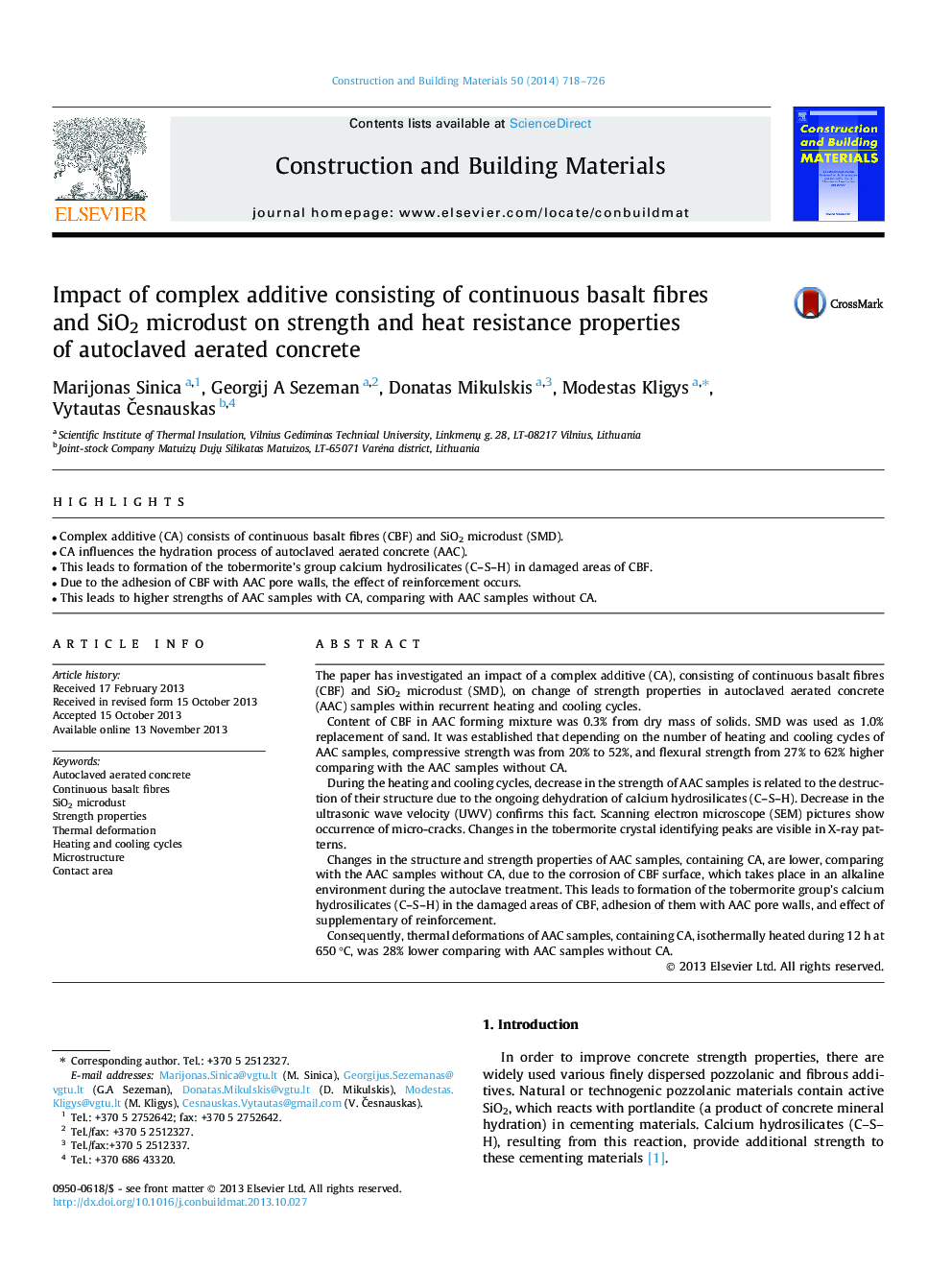| Article ID | Journal | Published Year | Pages | File Type |
|---|---|---|---|---|
| 257935 | Construction and Building Materials | 2014 | 9 Pages |
•Complex additive (CA) consists of continuous basalt fibres (CBF) and SiO2 microdust (SMD).•CA influences the hydration process of autoclaved aerated concrete (AAC).•This leads to formation of the tobermorite’s group calcium hydrosilicates (C–S–H) in damaged areas of CBF.•Due to the adhesion of CBF with AAC pore walls, the effect of reinforcement occurs.•This leads to higher strengths of AAC samples with CA, comparing with AAC samples without CA.
The paper has investigated an impact of a complex additive (CA), consisting of continuous basalt fibres (CBF) and SiO2 microdust (SMD), on change of strength properties in autoclaved aerated concrete (AAC) samples within recurrent heating and cooling cycles.Content of CBF in AAC forming mixture was 0.3% from dry mass of solids. SMD was used as 1.0% replacement of sand. It was established that depending on the number of heating and cooling cycles of AAC samples, compressive strength was from 20% to 52%, and flexural strength from 27% to 62% higher comparing with the AAC samples without CA.During the heating and cooling cycles, decrease in the strength of AAC samples is related to the destruction of their structure due to the ongoing dehydration of calcium hydrosilicates (C–S–H). Decrease in the ultrasonic wave velocity (UWV) confirms this fact. Scanning electron microscope (SEM) pictures show occurrence of micro-cracks. Changes in the tobermorite crystal identifying peaks are visible in X-ray patterns.Changes in the structure and strength properties of AAC samples, containing CA, are lower, comparing with the AAC samples without CA, due to the corrosion of CBF surface, which takes place in an alkaline environment during the autoclave treatment. This leads to formation of the tobermorite group’s calcium hydrosilicates (C–S–H) in the damaged areas of CBF, adhesion of them with AAC pore walls, and effect of supplementary of reinforcement.Consequently, thermal deformations of AAC samples, containing CA, isothermally heated during 12 h at 650 °C, was 28% lower comparing with AAC samples without CA.
